Building the Maybrook Line Across Dutchess County
The grand plan of the Boston Hartford and Erie Railroad had failed in 1870. Their plan had been to connect southern New England with a shipping port and ferry on the Hudson River at Dennings Point. Tracks were to be built from Connecticut through the southern part of Dutchess County to connect with the D&C/ND&C at Hopewell. Hopewell was not yet a junction. Grading of this line was well under way but track laying at Hopewell had just begun when the failure came. After the failure of the BH&E, the assets were reformed and emerged as the New York and New England Railroad, the NY&NE. By 1880 the ND&C records begin to show signs that the old BH&E plan of reaching the Hudson River was not really dead. The NY&NE Railroad planned to build a ferry facility at Fishkill Landing about a mile north of the old BH&E site at Dennings Point.
. The NY&NE decided to buy trackage rights on the existing ND&C Railroad between Hopewell and Wicopee (Beacon). From Wicopee they planned to build a new section of tracks to connect with the ferry and the Hudson River Railroad at Fishkill Landing, now part of Beacon NY. Probably the biggest obstacle in the line from Brewster to Hopewell was Whaley Lake. There was not enough room between the lake and the rocky hills to build the line so they elected to cross part of the water. Workers soon discovered that the lake was very deep and partly filled with peat. After driving pilings more than 110 feet into the peat they decided to use fill. The fill promptly sank out of sight so they added more fill and the peat began to rise up alongside the construction. Faced with a tight schedule and few options they continued to add train loads of fill through the summer of 1881. It took 80,000 cubic yards of fill before the roadbed was finally stable enough to lay tracks.
Between Wicopee Junction and Fishkill Landing, the NY&NE tracks had to cross the NYC Hudson River line which ran along the river bank. The NY&NE built a bridge over the NYC&HR Railroad to avoid traffic conflicts. After crossing the HR Railroad, the NY&NE tracks curved north along the shore toward Fishkill Landing. This route is still in use as part of the Metro North Railroad.
Construction at Fishkill Landing included a long stretch of pilings driven into the east bank of the river to support the tracks from Wicopee Junction. A considerable amount of fill was required for the roadbed between the river and the Hudson River Railroad tracks. The new line ran northward along the shore to where the ferry facilities were being built. On October 8th a short note stated that the frog to connect the NY&NE main to the ND&C main at Hopewell was ready for installation. A temporary crossover connection to the ND&C main line was installed on 17 October 1881. With the completion of this connection Hopewell became Hopewell Junction. The first train from Boston used the temporary crossover connection at Hopewell Junction and arrived at Fishkill Landing on 21 October 1881. It was one passenger coach and a NY&NE office car. On board were 20 NY&NE officers and directors plus a reporter from the “Newburgh Journal”. After inspecting the work at Fishkill Landing, and eating a hearty meal with interviews, the reporter was dropped off at Matteawan as the train returned to Boston.
The main line connecting switch at Hopewell Junction was installed and traffic began moving on 8 December 1881. Four days later on 12 December the Fishkill Landing ferry began operations with a carload of New York State turkeys bound for Providence Rhode Island. The tracks eastward from Fishkill Landing to Wicopee Junction (in Beacon NY) as well as the section from Hopewell Junction into Connecticut were complete enough for traffic to begin flowing. Christmas turkeys for the tables of Providence, RI passed over the ND&C tracks between Wicopee and Hopewell that cold December day in 1881.
In January 1882 there was an article in the “Fishkill Journal” about the new ferry named for William T. Hart who was an early president of the NY&NE railroad. It had been built in Philadelphia for use in New York harbor but it was too high to fit under some of the bridges so it was assigned to service between Fishkill Landing and Newburgh. At that time it was the second largest ferry in the world, being 300 feet long and 80 Feet wide. The Hart carried a crew of 24 men. There was a paddle wheel on each side driven by an independent steam engine which required 3 firemen each to shovel coal. By reversing one engine, the Hart could turn around in its own length. The Hart could carry up to 27 freight cars or 18 passenger cars and took about 15 minutes to cross the Hudson River. At that rate, a 50 car freight train took more than an hour to cross the river.
The next few weeks saw a flurry of letters to smooth out operating difficulties. Imagine the situation: here were two railroads trying to run scheduled trains, both passenger and freight, in both directions on one 11-mile section of single track main line between Hopewell Junction and Wicopee Junction. In reading the letterbooks you can almost feel the frustration of the ND&C management in trying to control the situation. Here was a conservative local railroad trying to deal with an invasion of “cowboy” style train crews and still maintain safe operations. The NY&NE crews were moving freight as fast as possible for their company and dealing with a slow traffic bottleneck. There was a marked difference in style between the two roads. In 1882 neither side could know the future outcome, but the same conflicting relationship lasted for over 20 years.
Of all the freight carried by railroads there was probably more coal than any other item. Homes, businesses, industry, steamboats and railroads were all heated or powered by coal. Every small town had at least one coal dealer and sometimes several. In many situations dealers in an area were supplied by different railroads which sometimes involved intense competition or some sort of gentleman’s agreement to maintain prices. Since railroads did not always trust each other or honor the agreements, there was considerable friction and sometimes open hostility in the coal business. This was particularly true after the opening of the Poughkeepsie Railroad Bridge in 1888, which opened a direct rail route to the coal fields without slow and expensive ferry service across the Hudson River.
Sparks from engine smokestacks were always a problem, but poor maintenance of the stacks and screens made things worse. In the summer of 1882 there were many grass fires along the line. The problem of NY&NE engines starting fires did not go away for very long. There are many letters of complaint to the NY&NE over the years.
Before air brakes came into general use on trains, the crews could often be found walking on top of the freight cars to reach the hand brake wheels while trains were in motion. This of course was a safety hazard especially around bridges and tunnels. One safety measure was called bridge “tell tales“. This was actually a very simple set of ropes hanging down over the tracks a distance before the bridge or tunnel. Anyone on top of a car would be brushed by the ropes as a warning that an obstruction was close at hand. These tell tales became another sore point between the NY&NE and the ND&C. This all came to a head in the spring of 1886 when the NY&NE brakemen were tampering with the ropes while riding on the tops of the cars. Many of the ropes were completely missing and the ND&C management made numerous complaints to the NY&NE.
With the opening of the Poughkeepsie Railroad Bridge in December 1888, the NY&NE ferry at Fishkill Landing began to feel the pinch of competition from coal trains rolling across the river into Dutchess County. Ferry service would sometimes come to a halt when the Hudson River ice became too thick in the winter. The Bridge did not have this problem. The Bridge route also was faster without the handling required to get train cars on and off a ferry boat.
The NY&NE faced an even greater challenge in the form of J. P. Morgan and the New Haven Railroad. The two roads were in direct competition in the New England area, and the New Haven began cutting off access to NY&NE business. NY&NE revenues dropped, and J. P. Morgan began acquiring NY&NE stock at low prices. By 1895 he had control of the NY&NE and along with it the Fishkill Landing ferry terminal. The ND&C books began to refer to the NY&NE as the New England Railroad. The change of name and management did not seem to improve their safety record.
The name New England Railroad did not last long. Within three years, in July of 1898, the name was again changed. The ND&C line from Hopewell Junction to Wicopee Junction was then traveled by trains of the New York, New Haven and Hartford Railroad, Highland Division. Fishkill Landing operated as part of the New Haven Railroad. A few years later, in June 1904 the New Haven Railroad withdrew all passenger service on the line but continued to handle freight. Later that same summer, the train car ferry was discontinued leaving only the connection with the NYC Hudson Line.
After years of a stormy relationship the NY&NE was no more, and the ND&C survived. But then the ND&C had the giant New Haven Railroad at their door with J. P. Morgan running the show. The New Haven RR would develop the tracks between Connecticut and Hopewell Junction as a major freight route and call it the Maybrook Line. The next link in the chain would be the big railroad bridge in Poughkeepsie opened for traffic in 1889.
The Dutchess County RR completed the route across Dutchess County by building the section from the Poughkeepsie bridge to Hopewell Junction in 1892. The Maybrook Line across the county was then a complete east west route.
**********


This was the heading at the top of paperwork from the PR&NE RR in the 1890’s.
**********
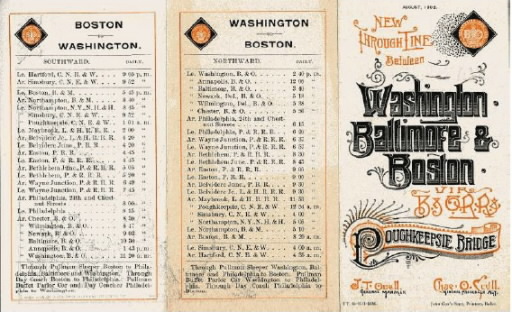
This Timetable shows through Pullman sleeper car service that crossed the Poughkeepsie bridge in 1892. The train service ran to Boston, Philadelphia, Baltimore and Washington DC. It is a shame that the bridge crossing was after midnight when it would be dark and most people would be sleeping. The view from the train windows would have been spectacular.
**********
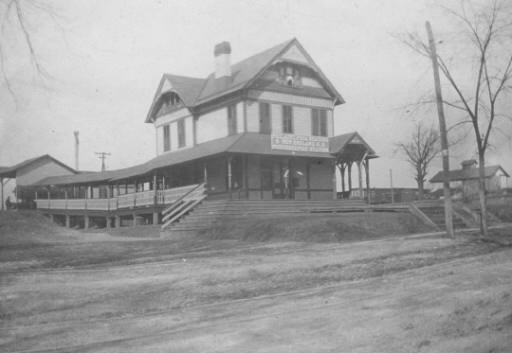
Passenger station on Parker Avenue Poughkeepsie when it was operated by the Philadelphia, Reading & New England Railroad in the 1890’s. From the Art Church collection.
**********
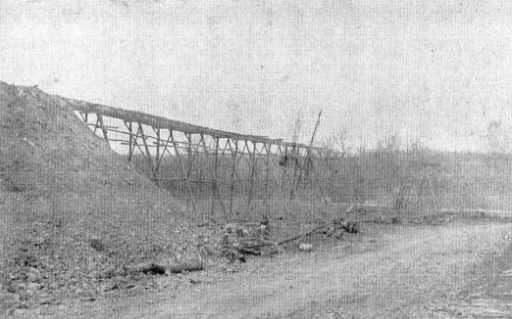
Filling in the embankment to build the Diddell crossing underpass. This was done when the Maybrook Line was straightened and double tracked in 1910. Mildred Diddell’s family farm supplied the timbers for this trestle and fill operation.
From the collection of Mildred Diddell courtesy of John Helmeyer.
**********
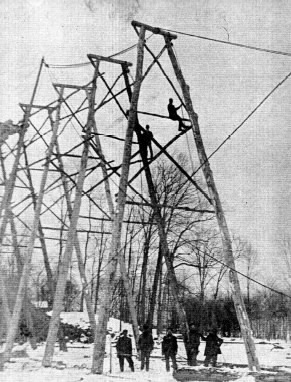
Filling in the embankment to build the Diddell crossing underpass. This was done when the Maybrook Line was straightened and double tracked in 1910.
From the collection of Mildred Diddell courtesy of John Helmeyer.
**********
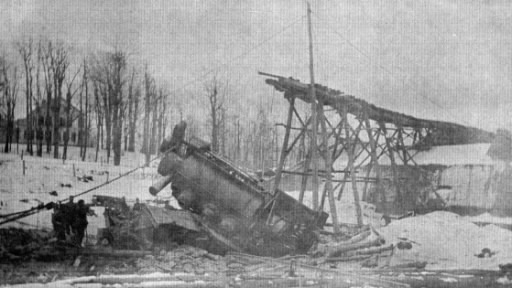
Filling in the embankment to build the Diddell crossing underpass. This was done when the Maybrook Line was straightened and double tracked in 1910. This locomotive was too heavy for the temporary timber trestle. It must have been quite a ride that day.
From the collection of Mildred Diddell courtesy of John Helmeyer.
**********
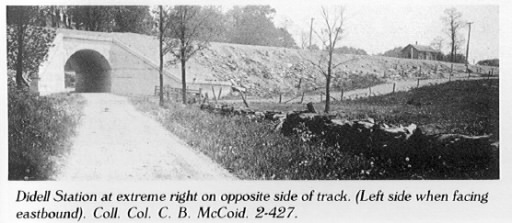
Diddell crossing on the Maybrook Line.
From Nimke’s CNE books Vol II page 200
This is what the Diddell (Didell???) crossing trestle and fill looked like when it was finished.
**********

Postcard view of Towners NY about 1910. Look just to the right of the station. There is a second train coming across the “crooked bridge” over the Harlem line.
**********
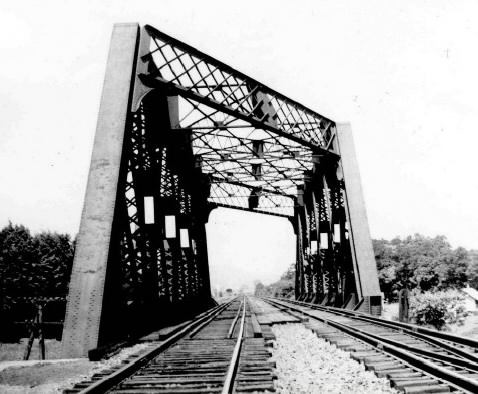
Maybrook Line bridge at Towners in 1937. The Maybrook Line crosses over the NYC Harlem line at an angle so the bridge is “crooked”.
Fran Donovan collection.
**********
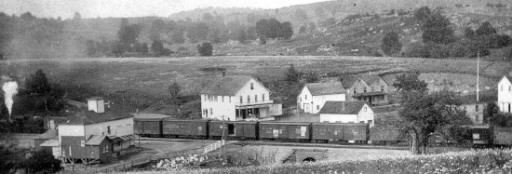
The Maybrook Line passes through Holmes, NY
**********
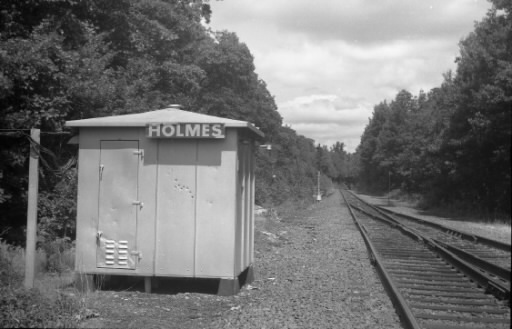
Maybrook Line at Holmes
**********
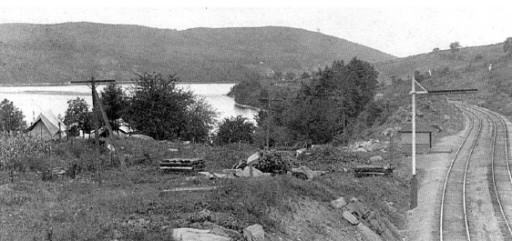
Whaley Lake looking west with the double track Maybrook Line a right.
**********
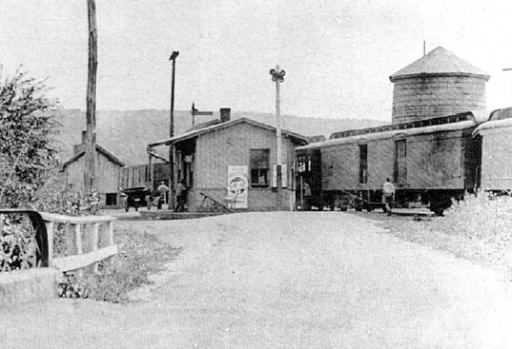
West Pawling station on the Maybrook Line.
**********
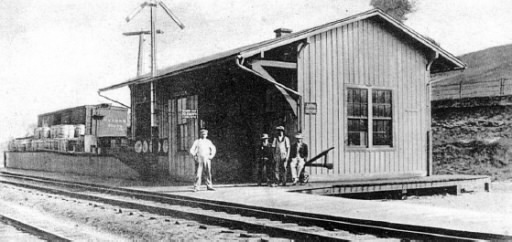
Poughquag station on the Maybrook Line. Eastbound freight trains would be struggling up the mountain when passing this spot.
**********
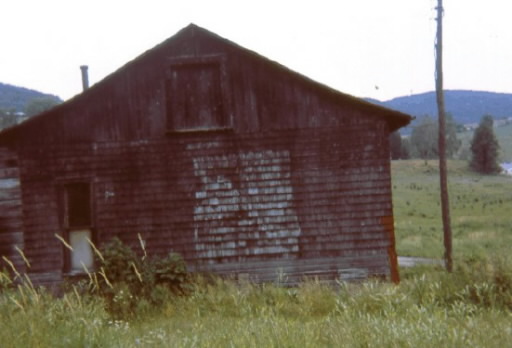
Poughquag station on the Maybrook Line in 1968.
Photo by Roger Liller
**********
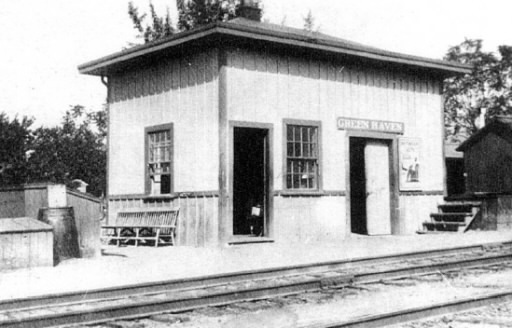
Green Haven station on the Maybrook Line.
The tracks run just outside the walls of the famous New York State prison at Green Haven.
**********
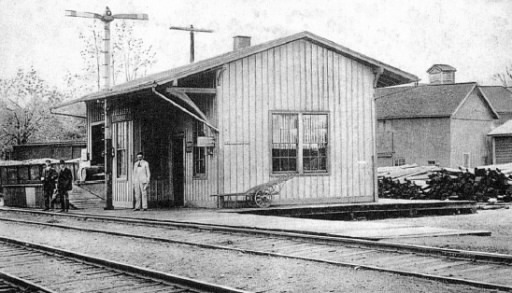
Stormville station a few miles east of Hopewell Junction.
**********
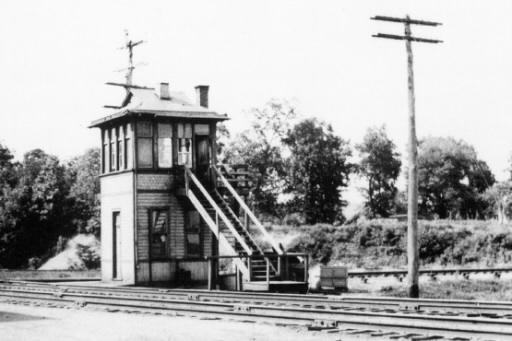
New Haven tower SS196 on the Maybrook Line.
This tower guarded the crossing of the ND&C/CNE at Hopewell Junction.
**********
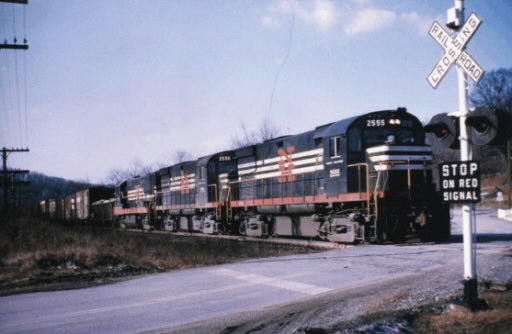
Eastbound New Haven freight train on the Maybrook Line in the late 1960’s.
Photo by the late Austin McEntee
**********
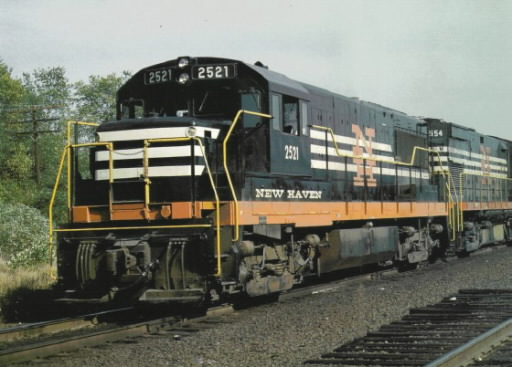
This is a General Electric type U25B locomotive that was one of the newest to haul freight trains across the Poughkeepsie bridge before the fire. They weigh about 230 tons each and have 2500 horsepower diesel engines. They entered service in the mid 1960’s and some are still running.
This photo was taken in Hopewell Junction yard by Jack Swanberg who was part of the crew on this run.
**********

A westbound NH freight on the Maybrook Line charging through Hopewell Junction in 1947.
From the T. J. McNamara collection.
**********
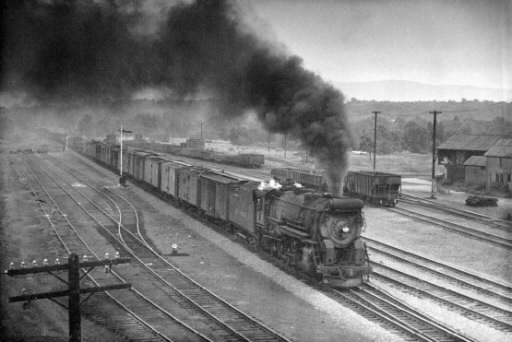
Westbound New Haven RR freight train steaming through Hopewell Junction on the Maybrook Line in 1947. Bry Dain Lumber yard is at right.
From the T. J. McNamara collection.
**********
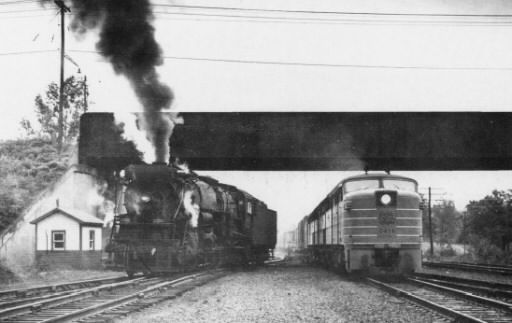
#3558 was the last steam pusher in Hopewell Junction in July 1950. This engine had foot boards for service in the Maybrook yard but was sent over the big bridge to Hopewell Junction on rainy days. On this day in 1950 the diesels did not need a push.
**********
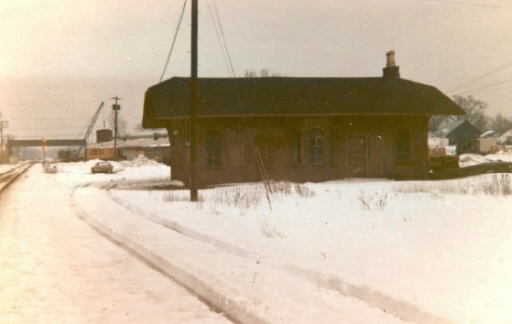
The Maybrook Line in Hopewell Junction on a snowy day in 1968.
Photo by Roger Liller.
**********
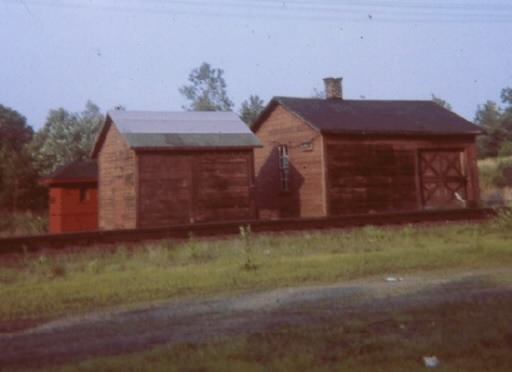
Maybrook Line section house in Hopewell Junction 1968
Photo by Roger Liller
**********

Diddell Station on the Maybrook Line about 1910.
**********
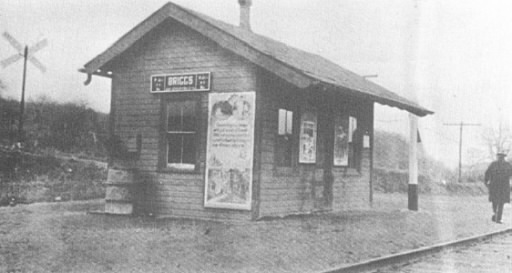
Briggs station on the Maybrook Line east of Poughkeepsie.
**********
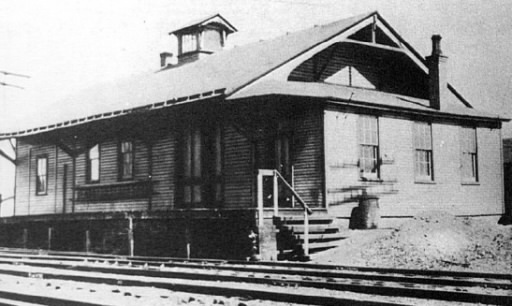
Poughkeepsie freight house in 1924.
**********

Passenger station on Parker Avenue Poughkeepsie when it was operated by the New Haven Railroad in the 1920’s.
**********
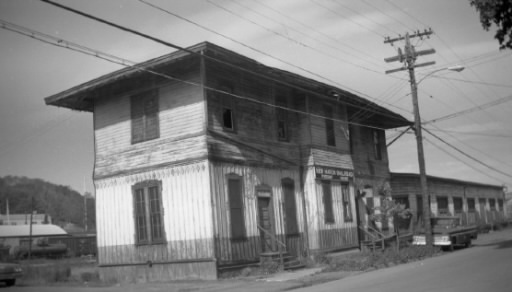
New Haven RR freight house on Parker Avenue in Poughkeepsie.
From the collection of the late Austin McEntee.
***********
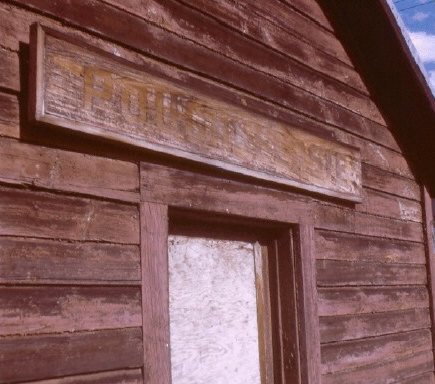
Sign on the former CNE station in Poughkeepsie
**********
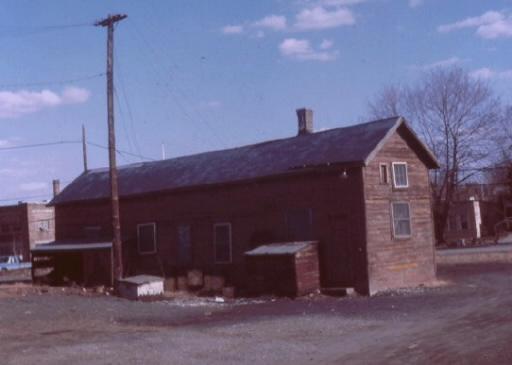
Smith Street yard in Poughkeepsie in 1968
Photo by Roger Liller
**********
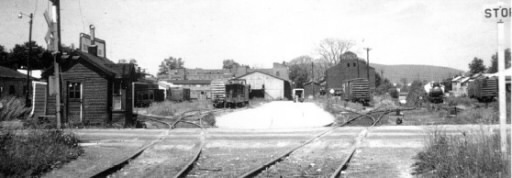
Smith Street yard in Poughkeepsie looking west
***********
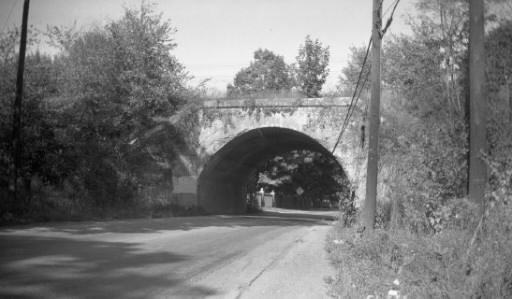
The Maybrook Line passed over Salt Point Turnpike on the east side of Poughkeepsie.
From the collection of the late Austin McEntee.
**********
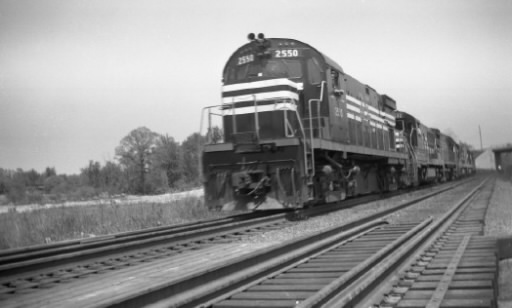
Fast freight on the Maybrook Line at Poughkeepsie.
Photo by the late Austin McEntee.
**********
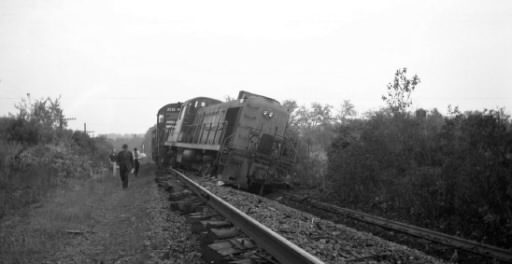
Wreck near the Titusville Road crossing Poughkeepsie on 9-30-1967.
From the collection of the late Austin McEntee
**********
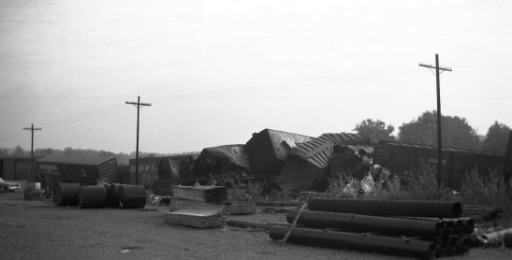
Wreck near the Titusville Road crossing Poughkeepsie on 9-30-1967.
From the collection of the late Austin McEntee
**********
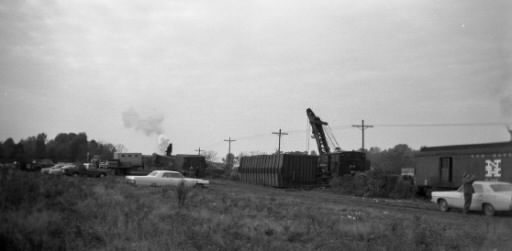
Wreck near the Titusville Road crossing Poughkeepsie on 9-30-1967.
From the collection of the late Austin McEntee.
**********
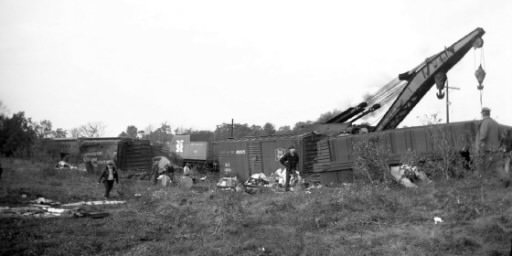
Wreck near the Titusville Road crossing Poughkeepsie on 9-30-1967.
From the collection of the late Austin McEntee
**********
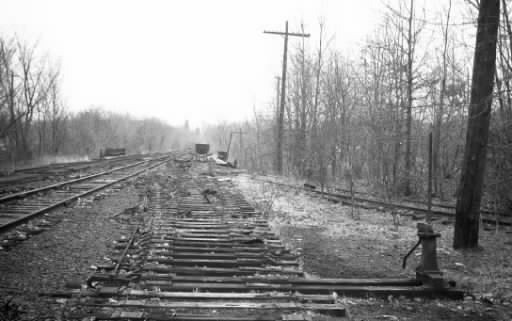
Maybrook Line in Poughkeepsie in 1981
Austin McEntee collection
Two years later all traffic stopped and the rest of the rails were removed.
**********
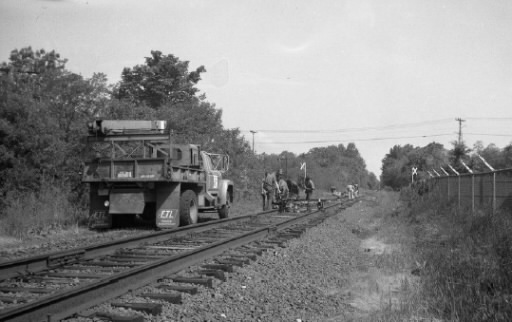
Track maintenance work on the Maybrook Line near Poughkeepsie.
From the collection of the late Austin McEntee
**********
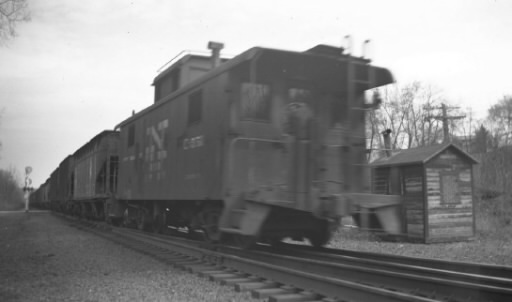
New Haven caboose on the Maybrook Line in Poughkeepsie.
From the collection of the late Austin McEntee.
**********
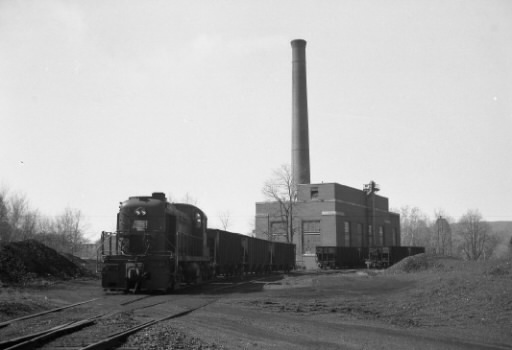
A coal delivery to the Hudson River State Hospital. This was on the Hospital Branch off the Maybrook Line in Poughkeepsie.
This branch also connected via a switchback to the Hudson line of the NYC just north of the Poughkeepsie RR station.
Photo by the late Austin McEntee
**********
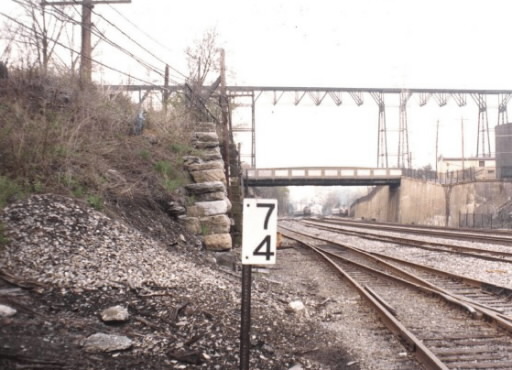
View of the Poughkeepsie RR Bridge from the Hudson Line just north of the Poughkeepsie RR station.
Tracks in the lower right corner are the connection to the Hospital Branch.
Photo by the late Austin McEntee.
**********
West of the Hudson
**********
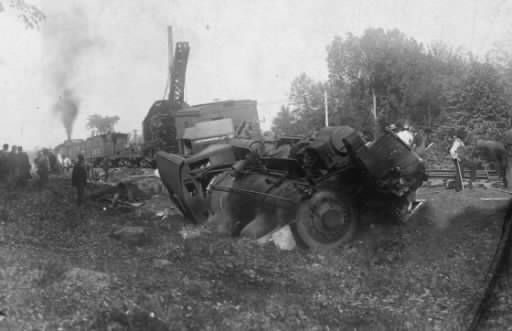
Maybrook Line Wreck on 18 September 1907
This wreck happened in the Town of Loyd near the west end of the big Poughkeepsie bridge. It seems that a track crew had been installing new heavier rail. When they quit for the day they did not match up the different size rails very well. When #42 came along a flange picked the joint and derailed the locomotive and train. Engineer William Prince was killed and fireman Wicklow was injured. Six cars of the train were wrecked.
The tall smokestack in the background was for the New Paltz & Wallkill Valley trolley line power plant.
**********
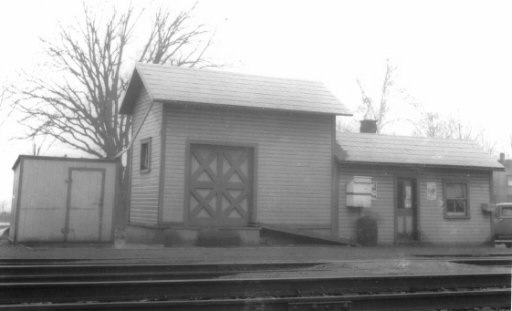
Clintondale station in April of 1931
From the Austin McEntee collection
This station was along the double track Maybrook Line between the Poughkeepsie railroad bridge and the big yard at Maybrook.
**********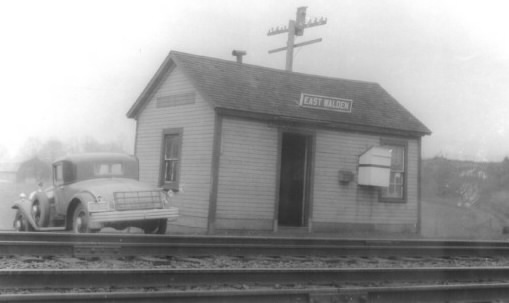
East Walden station in November 1932
From the Austin McEntee collection
This station was along the double track Maybrook Line between the Poughkeepsie railroad bridge and the big yard at Maybrook. This photo was intended for a book by Bob Adams but it was never published after his death.
That is Bobs car at left.
**********
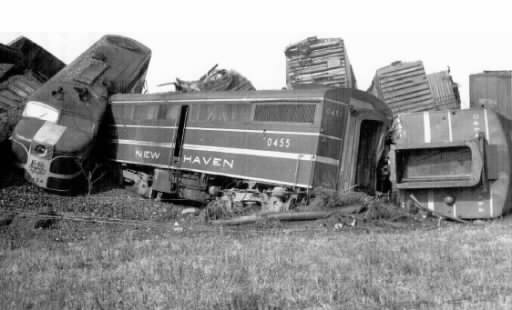
Wreck at Walden in October 1953
George Cook collection
**********
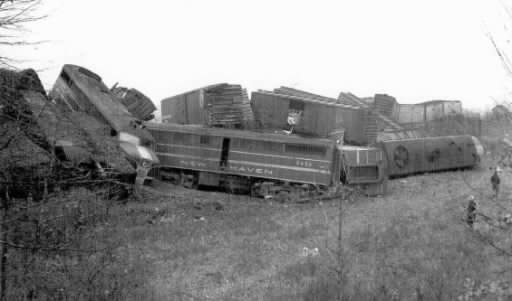
Wreck at Walden in October 1953
George Cook collection
**********
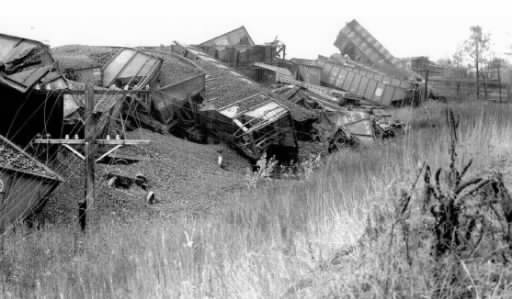
Wreck at Walden in October 1953
George Cook collection
**********
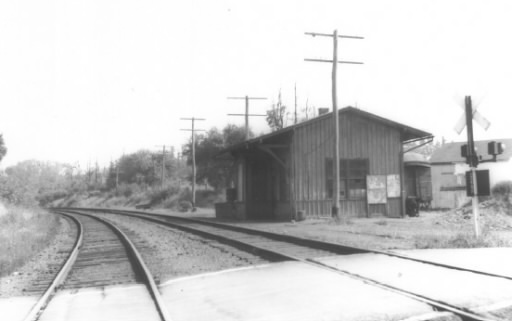
Modena station in 1931
From the Austin McEntee collection
This station was along the double track Maybrook Line between the Poughkeepsie railroad bridge and the big yard at Maybrook.
**********
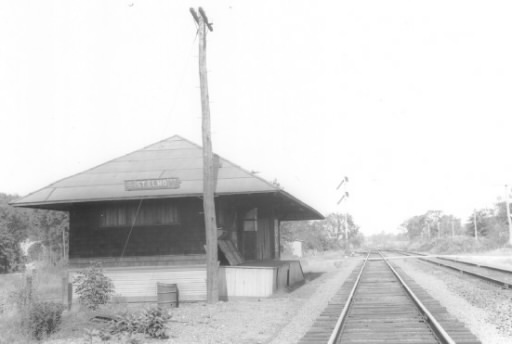
St. Elmo station in 1936
From the Austin McEntee collection
This station was along the double track Maybrook Line between the Poughkeepsie railroad bridge and the big yard at Maybrook.
**********
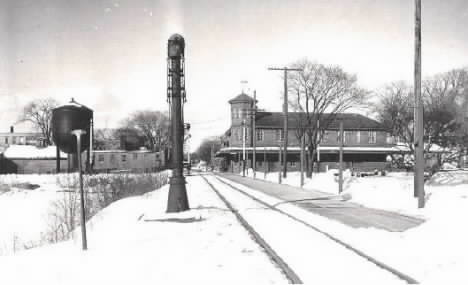
Canaan Station in the 1940’s
Lee Beaujon collection
Sadly, the right half of this historic building burned. It was torched by teenagers. They were caught and now there is a restoration program underway.
At Canaan, the Central New England Railway crossed the Housatonic Railroad.
Both became part of the New York, New Haven & Hartford Railroad.
**********
A New Hudson Bridge, Revived Beacon Line, HYPERLOOP and More
The Maybrook Line was a line of the New York, New Haven and Hartford Railroad which connected with its Waterbury Branch in Derby, Connecticut, and its Maybrook Yard in Maybrook, New York, where it interchanged with other carriers.
If one looks at the most popular Pages on our WebSite, over half directly reference the Maybrook Line. Lot’s of folks have an interest in it. The “Maybrook Line” was important to New England before the advent of Penn Central and before the Poughkeepsie Bridge burned. This piece of the railroad carried freight from Maybrook Yard, across the Poughkeepsie Bridge to Hopewell Junction where it joined a line from Beacon. The railroad then went to Brewster, then Danbury, and finally to Cedar Hill Yard in New Haven.
WHY and How To Fix The “MAYBROOK LINE”?
Container port/intermodal facility/rail bridge
The construction of a railroad bridge between New Hamburg and Marlboro is likely the least expensive place to build a Hudson River crossing between Manhattan and Albany. The stone for ramps, sand and gravel for concrete and a steel beam assembly and storage area would be right on sight. All materials and equipment could be transported by barge or boat. The bridge itself would have only four or five piers (the most costly part to build) since the Hudson River is about the same width as it is in Poughkeepsie.
The Hudson River component connects Dutchess, Ulster and Orange counties to the world economy (finished goods, spare parts, components parts, raw materials, food stuffs) and the railroad and interstate road components connect these NY counties to the rest of North America (US, Mexico, Canada).
With the container port/intermodal facility/rail bridge, the flow in and out of raw materials, spare parts, partially finished goods, foodstuffs and components will allow for new industries and businesses to locate near this facility and add to the tax base of these three NY counties: Dutchess, Ulster and Orange counties.
Although the Dutchess County Airport is a tiny regional airport with a 5,000 foot runway, it has some big potential. The airport land extends a mile Northeast of the present runway end at New Hackensack Road and borders on the former New Haven Maybrook Line/Dutchess Rail Trail. As the NY Air National Guard gets crowded out by international air traffic at Stewart International Airport their operation could be moved over to Dutchess Airport without disrupting the lives of the guard members and their families through forced relocation.
Beacon itself is exploding with “developer” activity, and it needs a trolley or light rail for the city only to transform back into a pedestrian oriented city.
Other activities include: Solidization of rail links in Connecticut to handle increased traffic; a possible HYPERLINK for improved service along the Beacon Line and in/out of New York City
Now you are going to ask. What does the New York City Metropolitan Transportation Authority have to do with the “BEACON LINE”? IT OWNS IT! Must realize that NYCMTA is a “regional” organization. With all that went on with Penn-Central and CONRAIL somebody had to own it!
***********
Go To World’s Greatest WebSite
>>> New York Subways
>>>Commuters, Car Culture and The Jenny Plan
>>>Long Island Railroad
>>>Chicago, South Shore & South Bend Railroad
>>>POTUS – Trains for the President
>>>Milk Trains
>>>The Fabled Rutland Milk
>>>The Muhammad Ali Hyperlink
About Our Great WebSite
>>>>>>About Troop Trains
>>>Metro North Railroad
>>>A Collection of Short Stories about Railroads – Book One
>>>>>>Buffalo Creek Railroad
>>>A Collection of Short Stories about Railroads – Book Two
>>>>>>Troy & Greenbush Railroad
>>>DL&W Railroad, Erie Lackawanna and Lackawanna Cutoff
>>>Circus Trains
>>>>>>Disposition Of Circus Trains
>>>Robert Moses – Against Mass Transit
>>>Troop Trains
>>>>>>Troop Train Movie
>>>Railroader Biographies
>>>>>>George H. Daniels
>>>>>>Plimmon H Dudley
>>>>>>Leonore F. Loree
>>>John W. Barriger: Rail Historian and Railfan
Contact and Great Blogs
Other Interesting WebSites
>>>Ontario & Western Railroad
>>>Connecticut To Philadelphia
>>>Central New York Railroad
>>>Chicago, Rail Capital
>>>The Ride To Choate
>>>Union Pacific Railroad-established by Abraham Lincoln to span the continent
>>>The Warwick Valley and Other Railroads West of the Hudson
>>>Short Line Railroads
>>>>>>Little Falls & Dolgeville
>>>>>>Gary Railway
>>>>>>The Owasco River Railway
>>>>>>Dexter and Northern Railroad Company
>>>Philadelphia, Pennsylvania
>>>Washington, the Nation`s Capital
>>>Royal Tour 1939
>>>The Monon Railroad
>>>Big 4 Bridge: Jeffersonville to Louisville
>>>Chicago & Western Indiana Railroad
>>>The Southern New York Railway
>>>Electric Railroads
>>>Lines West
>>>High Speed Rail
>>>Northeast Corridor
>>>New York State
Some Fascinating WebPages
>>>New York State Railroads, and NY Central Railroad
>>>Delaware & Hudson Railway
>>>Lehigh Valley Railroad
>>>Head End Equipment
>>>Boston & Maine Railroad
>>>The Four Railroads of Utica
>>>>>>Gulf Curve, April 1940 New York Central Accident
>>>>>>New York Mills Branch On The West Shore
>>>Railroad Mergers
>>>Railroad Bridges and Tunnels
>>>My last ride on the JFK Express subway in April 1990
>>>Chicago Bypass
>>>Van Sweringen Brothers, Nickel Plate and Other Ohio Railroads
>>>New York City Transit Planning
>>>Tahawus: Railroad to a Mine
>>>Chicago Rail Fair
>>>Joint Winter Olympics for Montreal and Lake Placid
>>>Abandoned Railroads
>>>>>>Putnam Division Abandonments
>>>Amtrak’s Secret Business
>>>Alphabet Routes
>>>EMD Model 40
>>>Budd RDC
>>>Benton Harbor – Once A Rail Center
>>>Snow and Railroads
Central New England Railway
>>>>>>The Central New England In Connecticut
>>>>>>New York and New England Railroad
>>>>>>1937 Fan Trip
>>>Central New England Railway In New York State
>>>The Railroads Of Pine Plains
>>>CNE in Hopewell Junction
>>>The Maybrook Line Across Dutchess County
>>>The Great Bridge At Poughkeepsie
>>>Poughkeepsie Bridge After The Fire
>>>The Rhinebeck & Connecticut Railroad
>>>Central New England Railway Connecticut Connection
>>>Maybrook Yard
>>>>>>Maybrook Yard 1940’s (Maybrook Journal)
>>>Newburgh, Dutchess and Connecticut Railroad (ND&C)
>>>>>>CNE/NDC Dutchess Junction and Matteawan
>>>>>>CNE/NDC Glenham to Hopewell Junction
>>>>>>CNE/NDC Hopewell Junction to Millbrook
>>>>>>CNE/NDC Bangall and Pine Plains
>>>>>>CNE/ND&C between Pine Plains and Millerton
>>>Fishkill Landing
>>>>>>The First Phase Of The NYC Rebuilding At Fishkill Landing
>>>>>>The Second Phase Of The NYC Rebuilding At Fishkill Landing
>>>>>>The Final Phase Of The NYC Rebuilding At Fishkill Landing
>>>Poughkeepsie & Eastern in the Poughkeepsie Area
>>>Poughkeepsie & Eastern North from Poughkeepsie
>>>One of the railroads that made up the CNE Railway was the Poughkeepsie & Connecticut
Environment
>>>WEATHERTOPIA
Supply Chain Management
>>>Supply Chain Synchronization
Vacation French Riviera
>>>Castillon
>>>Menton
New Haven Railroad
>>>George Alpert, Last New Haven President
>>>Essex Steam Train
>>>Newport and Rhode Island Railroads
>>>Railroads To Cape Cod
>>>Cedar Hill Railroad Yard In New Haven
>>>Housatonic Railroad
>>>Manufacturers Street Railway in New Haven
>>>Train Stations Of Connecticut
>>>Boston and New England Railroads
>>>New Haven RR Signal Stations
>>>Connecticut Railfan
>>>Connecticut Freight Railroads
>>>Shoreline Bridges Of The New Haven Railroad
>>>Old Railroads Of Connecticut
>>>The Trolley In Connecticut
>>>The Shepaug Valley Railroad
You must be logged in to post a comment.